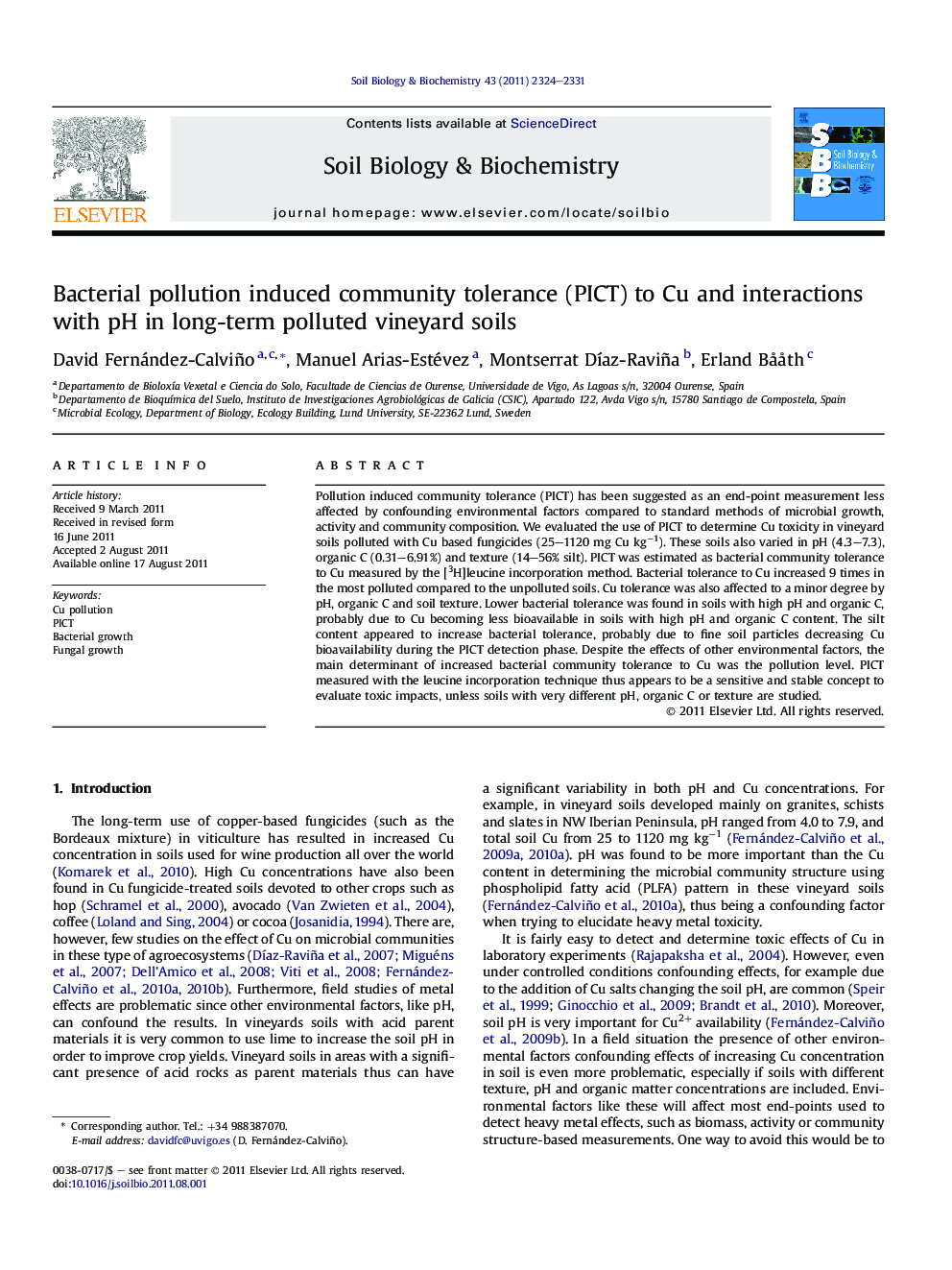| Article ID | Journal | Published Year | Pages | File Type |
|---|---|---|---|---|
| 2025040 | Soil Biology and Biochemistry | 2011 | 8 Pages |
Pollution induced community tolerance (PICT) has been suggested as an end-point measurement less affected by confounding environmental factors compared to standard methods of microbial growth, activity and community composition. We evaluated the use of PICT to determine Cu toxicity in vineyard soils polluted with Cu based fungicides (25–1120 mg Cu kg−1). These soils also varied in pH (4.3–7.3), organic C (0.31–6.91%) and texture (14–56% silt). PICT was estimated as bacterial community tolerance to Cu measured by the [3H]leucine incorporation method. Bacterial tolerance to Cu increased 9 times in the most polluted compared to the unpolluted soils. Cu tolerance was also affected to a minor degree by pH, organic C and soil texture. Lower bacterial tolerance was found in soils with high pH and organic C, probably due to Cu becoming less bioavailable in soils with high pH and organic C content. The silt content appeared to increase bacterial tolerance, probably due to fine soil particles decreasing Cu bioavailability during the PICT detection phase. Despite the effects of other environmental factors, the main determinant of increased bacterial community tolerance to Cu was the pollution level. PICT measured with the leucine incorporation technique thus appears to be a sensitive and stable concept to evaluate toxic impacts, unless soils with very different pH, organic C or texture are studied.
► PICT using Leu incorporation was determined in vineyard soils (25–1120 mg Cu kg−1). ► PICT increased 9 times in the most polluted soils. ► PICT was also affected to a minor degree by soil pH, total carbon concentration and texture. ► pH affected bacterial and fungal growth more than Cu.
